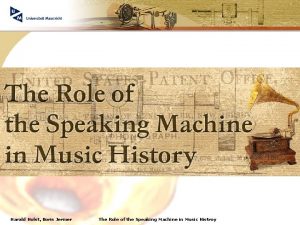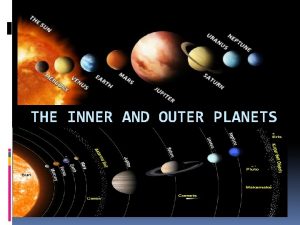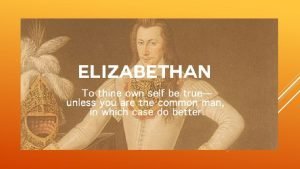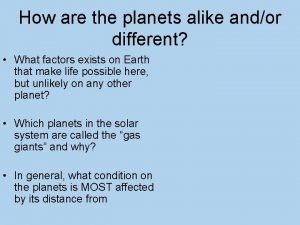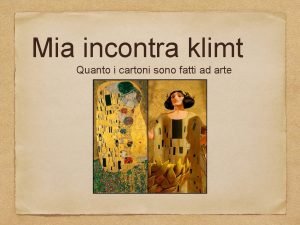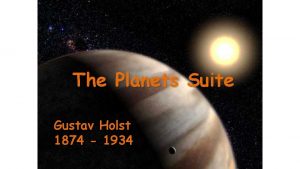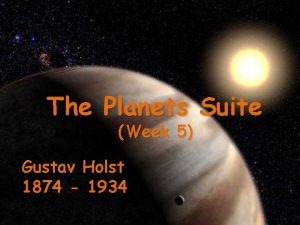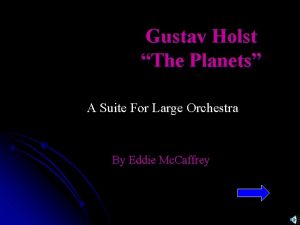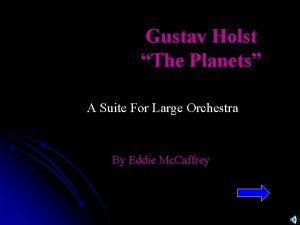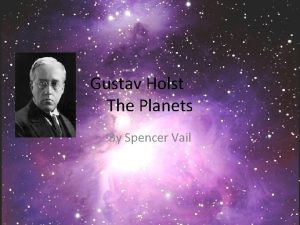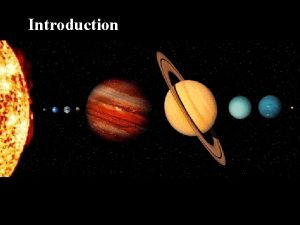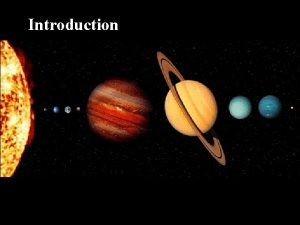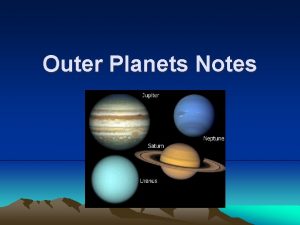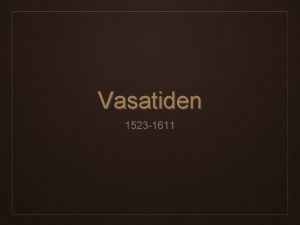Gustav Holst and The Planets Stargazers Stargazers Gustav





















































- Slides: 53

Gustav Holst and The Planets Stargazers

Stargazers Gustav Holst and The Planets Music. We are learning to. Appreciate and understand high quality music 8 Use musical vocabulary to explain why a piece might have been composed. 3

Gustav Holst and The Planets Suite Gustav Holst 1874 - 1934

Learning about a famous composer’s life • Gustav Holst was an English composer and music teacher for over 20 years. • Most of the music he composed was original, but he had influences from Hindu spiritualism and English folk tunes.

Holst was born into a very musical family. His grandfather was a harp composer and teacher; his father was an organist, pianist and choirmaster, and his mother was a singer. Clara Holst Gustavus von Holst Adolf Holst

As a child, Gustav was taught the piano and violin. This is Holst playing the violin. This is Holst’s piano. You can see it in the Holst Birthplace Museum. He composed The Planets on this piano.

Gustav was a sickly child. His eyes were weak, but no-one realised that he needed to wear glasses. His chest was weak and he suffered from asthma. When he was young, Gustav hated playing the violin, but enjoyed playing the piano.

Unfortunately, Holst also had pain in his hands, so it made practising the piano very difficult and painful. After leaving school, he got his first job as an organist and choirmaster.

He became a student at the Royal College of Music, where he studied composition. Unfortunately, the pain in his right hand became worse. Playing for a long time was impossible and he had to accept that he would never be a professional concert pianist.

Holst decided to take up the trombone. It would allow him to play in orchestras, and he could earn some money. Also, the experience would be useful to him as a composer. Perhaps, he also thought that playing the trombone would help to strengthen his chest and lungs.

• Holst wrote The Planets Suite between 1914 and 1916. • Each of the seven movements is named after a planet of the Solar System and its corresponding astrological character.

1. Mars - the Bringer of War 2. Venus - the Bringer of Peace 3. Mercury - the Winged Messenger 4. Jupiter - the Bringer of Jollity 5. Saturn - the Bringer of Old Age 6. Uranus - the Magician 7. Neptune - the Mystic

IAL about a famous composer’s life Holst did not compose a piece of music about Pluto, as Pluto was not discovered until 1930. Colin Matthews, a recent composer created a piece of music called Pluto: the Renewer. This is sometimes played alongside Holst’s Planet Suite in concerts.

Mars The Bringer of War

Identifying which musical instruments can be heard in a composition. Mars is the Roman god of war and bloodshed, whose symbol is a spear and shield.

Watch video clip: Watch Mars here While you listen, draw a picture of how the music makes you feel.

In this piece of music, you hear a lot of string or bowed instruments.

Holst gave an instruction for the instrumentalists to strike the string with their bow, rather than draw it across the strings. This gave the string instruments a more percussive sound. See a demonstration of col legno here


Venus The Bringer of Peace

Identifying which musical instruments can be heard in a composition. Venus was the Roman goddess of love and beauty. Watch Venus here

Venus was written to be the opposite to the music of Mars used very loud instruments such as con legno strings and brass. He therefore chose different instruments for Venus.

What timbre is • The timbre in music is the distinctive quality of a sound or instrument. This is why you can sometimes recognise certain instruments in a piece of music. • Holst decided that Venus should have a peaceful and soft timbre, in contrast to the harsh booming timbre of Mars.

• Holst chose a celesta to be the main instrument in this piece. • The celesta looks similar to an upright piano or a large wooden music box. • The keys are connected to hammers which strike a graduated set of metal plates, which are suspended over wooden resonators.

• The sound of the celesta is similar to that of a glockenspiel, but it has a much softer and more subtle timbre. • This quality gave the instrument its name. Celeste in French means ‘heavenly’.

Mercury The Winged Messenger

Identifying which musical instruments can be heard in a composition. Mercury was the messenger-god of Jupiter, the god of games, business and story-telling. Watch Mercury here

Mercury, the winged messenger has been described as flitting about, not unlike a cosmic butterfly. Listen to an extract again: What instruments can you hear? How can you tell?

How woodwind instrument works Some woodwind instruments are played by vibrating one or two wooden reeds, whereas others are blown directly into the mouthpiece.

How a woodwind instrument works • Mercury consists of mainly woodwind instruments, that pass from one to another. • Woodwind is the section of the orchestra that makes a noise when breath is blown along it. Woodwind instruments are virtually straight, and are made of wood or plastic with some metal.

http: //datadragon. com/educati on/instruments/winds. shtml


Identifying which musical instruments can be heard in a composition. In Roman mythology, Jupiter was the king of heaven and Earth, and of all the Olympian gods. Watch Jupiter here

• The music to Jupiter the Bringer of Jollity has been used many times in recent English history. • It was used as the tune to a very famous English poem, ‘I vow to thee my country’, which is now what it is most well-known for. Christians often sing it as a hymn in church.

IALT sing a song based on Gustav Holst’s Jupiter • The first verse of I vow to thee my country was played at the wedding of Prince Charles and Princess Diana in 1982. • The second verse was played at Princess Diana’s funeral in 1997. • http: //www. bing. com/videos/search? q=i+v ow+to+thee+my+country+lyrics&view=detai l&mid=635 DB 6 D 5 D 5 AAD 7 B 28373635 DB 6 D 5 D 5 AAD 7 B 28373&first=0&FORM=NVPF VR

• It is also used for the ‘World in Union’, theme to the Rugby World Cup. • The music has a very royal and patriotic feel, which is why it was chosen for this purpose.

Saturn The Bringer of Old Age

In Roman mythology, Saturn is the god of agriculture. Watch Saturn here

• After all the excitement of Jupiter, Holst decides to change the mood. • Saturn becomes a slow march, showing time going on, or someone or something ageing.

http: //www. desymus. org/Explorer. Concert/ Explorer_2011 -12_Holst. html • At first, two alternating strange sounding chords are heard from flutes and harps. • Then a slow melody (tune) is played by the double basses. • The music gradually gets faster as the trombones play a 4 -beat pattern.

http: //www. desymus. org/Explorer. Concer t/Explorer_2011 -12_Holst. html • The music becomes louder and more agitated. Bells clang and the loud brass instruments play. • After the loud climax, the music ends much more peacefully.

Uranus The Magician

Uranus was the first ruler of the universe and the god of the sky. He was the husband of Gaea, the goddess of the earth. Watch Uranus here

How a composer uses a motif to create harmony • Holst used a pattern called a motif or motive throughout Uranus. • It is used like a repeating pattern in a story, and helps to join different sections of a piece of music together. • Uranus has a 4 -note motif. Different instruments play this motif throughout the piece. • http: //www. desymus. org/Explorer. Concert/Exp lorer_2011 -12_Holst. html

• Classical composer Beethoven famously used a 4 -note motif in his 5 th Symphony:

• Motifs have also been used in films, particularly space-themed ones such as Close Encounters of the Third Kind. Aliens communicate with humans using a 5 note motif: http: //www. bing. com/videos/search? q=clo se+encounters+of+the+third+kind+music&v iew=detail&mid=C 8 D 41 A 23 F 60 AD 9 C 05 CA 4&first=0&FO RM=NVPFVR

Neptune The Mystic

In Roman mythology, Neptune was the god of the water and the Sea. Watch Neptune here

To understand how a fade can be used to end a piece of music • Neptune was one of the first pieces of orchestral music to have a fade-out ending. • Fading is a way to reduce the sound, so the music doesn’t just end. • Holst wanted Neptune “to be repeated until the sound is lost in the distance. So there was no difference between sound and silence. ”

Pluto The Renewer

Pluto was the god of the underworld. He was also known as Hades in Greek mythology. Watch Pluto here

• Pluto the Renewer was not composed by Holst, as it was not discovered until nearly 20 years after he wrote The Planets. • In 2000, Colin Matthews, an English composer, wrote Pluto the Renewer as an additional ending to the suite.

• Unfortunately, six years later in 2006, Pluto was removed as a planet, and re-classified as a ‘dwarf planet’.
 Holst the planets lesson plan
Holst the planets lesson plan What separates the inner and outer planets
What separates the inner and outer planets What is each planet made of
What is each planet made of Inner planets and outer planets
Inner planets and outer planets What are the four outer planets called
What are the four outer planets called Why are jovian planets bigger than terrestrial
Why are jovian planets bigger than terrestrial Gulong sa kabihasnang sumer
Gulong sa kabihasnang sumer Gisken holst
Gisken holst Harald holst
Harald holst Heidi holst-knudsen
Heidi holst-knudsen Keith holst
Keith holst Jette von holst-pedersen
Jette von holst-pedersen Characteristics of outer planets
Characteristics of outer planets What separates the inner and outer planets
What separates the inner and outer planets Elizabethan world view macrocosm microcosm
Elizabethan world view macrocosm microcosm My very excited mother just
My very excited mother just How are the inner and outer planets alike?
How are the inner and outer planets alike? Relieved symmetry
Relieved symmetry Gustav klimt mia and me
Gustav klimt mia and me Hát kết hợp bộ gõ cơ thể
Hát kết hợp bộ gõ cơ thể Ng-html
Ng-html Bổ thể
Bổ thể Tỉ lệ cơ thể trẻ em
Tỉ lệ cơ thể trẻ em Chó sói
Chó sói Tư thế worms-breton
Tư thế worms-breton Bài hát chúa yêu trần thế alleluia
Bài hát chúa yêu trần thế alleluia Các môn thể thao bắt đầu bằng tiếng nhảy
Các môn thể thao bắt đầu bằng tiếng nhảy Thế nào là hệ số cao nhất
Thế nào là hệ số cao nhất Các châu lục và đại dương trên thế giới
Các châu lục và đại dương trên thế giới Công thức tiính động năng
Công thức tiính động năng Trời xanh đây là của chúng ta thể thơ
Trời xanh đây là của chúng ta thể thơ Cách giải mật thư tọa độ
Cách giải mật thư tọa độ 101012 bằng
101012 bằng độ dài liên kết
độ dài liên kết Các châu lục và đại dương trên thế giới
Các châu lục và đại dương trên thế giới Thơ thất ngôn tứ tuyệt đường luật
Thơ thất ngôn tứ tuyệt đường luật Quá trình desamine hóa có thể tạo ra
Quá trình desamine hóa có thể tạo ra Một số thể thơ truyền thống
Một số thể thơ truyền thống Cái miệng nó xinh thế chỉ nói điều hay thôi
Cái miệng nó xinh thế chỉ nói điều hay thôi Vẽ hình chiếu vuông góc của vật thể sau
Vẽ hình chiếu vuông góc của vật thể sau Biện pháp chống mỏi cơ
Biện pháp chống mỏi cơ đặc điểm cơ thể của người tối cổ
đặc điểm cơ thể của người tối cổ Ví dụ về giọng cùng tên
Ví dụ về giọng cùng tên Vẽ hình chiếu đứng bằng cạnh của vật thể
Vẽ hình chiếu đứng bằng cạnh của vật thể Tia chieu sa te
Tia chieu sa te Thẻ vin
Thẻ vin đại từ thay thế
đại từ thay thế điện thế nghỉ
điện thế nghỉ Tư thế ngồi viết
Tư thế ngồi viết Diễn thế sinh thái là
Diễn thế sinh thái là Các loại đột biến cấu trúc nhiễm sắc thể
Các loại đột biến cấu trúc nhiễm sắc thể Số nguyên là gì
Số nguyên là gì Tư thế ngồi viết
Tư thế ngồi viết Lời thề hippocrates
Lời thề hippocrates








